Score breakdown
Things we like
- Excellent hybrid powertrain
- Comfortable, well-sorted ride
- New infotainment system
- Cheap servicing
Not so much
- GXL’s switch blanks
- Dark and unexciting cabin
- Not as well-packaged as rivals
- Expensive to buy
The 2023 Toyota Corolla Cross has finally landed in Australia. The combination of the popular Corolla badge with the on-trend small SUV form factor should, in theory, be a runaway success.
But you’d be right in thinking Toyota already sells a car that nails this brief, the C-HR. The Japanese-built Corolla Cross even shares its GA-C platform and 2640mm wheelbase with that Euro-centric small SUV. For now, Toyota says, both will co-exist in harmony.
And if we’re honest, the Corolla Cross’s looks aren’t particularly exciting, so its conservative design at least leaves a style-forward slice of the market open for the C-HR to live on.
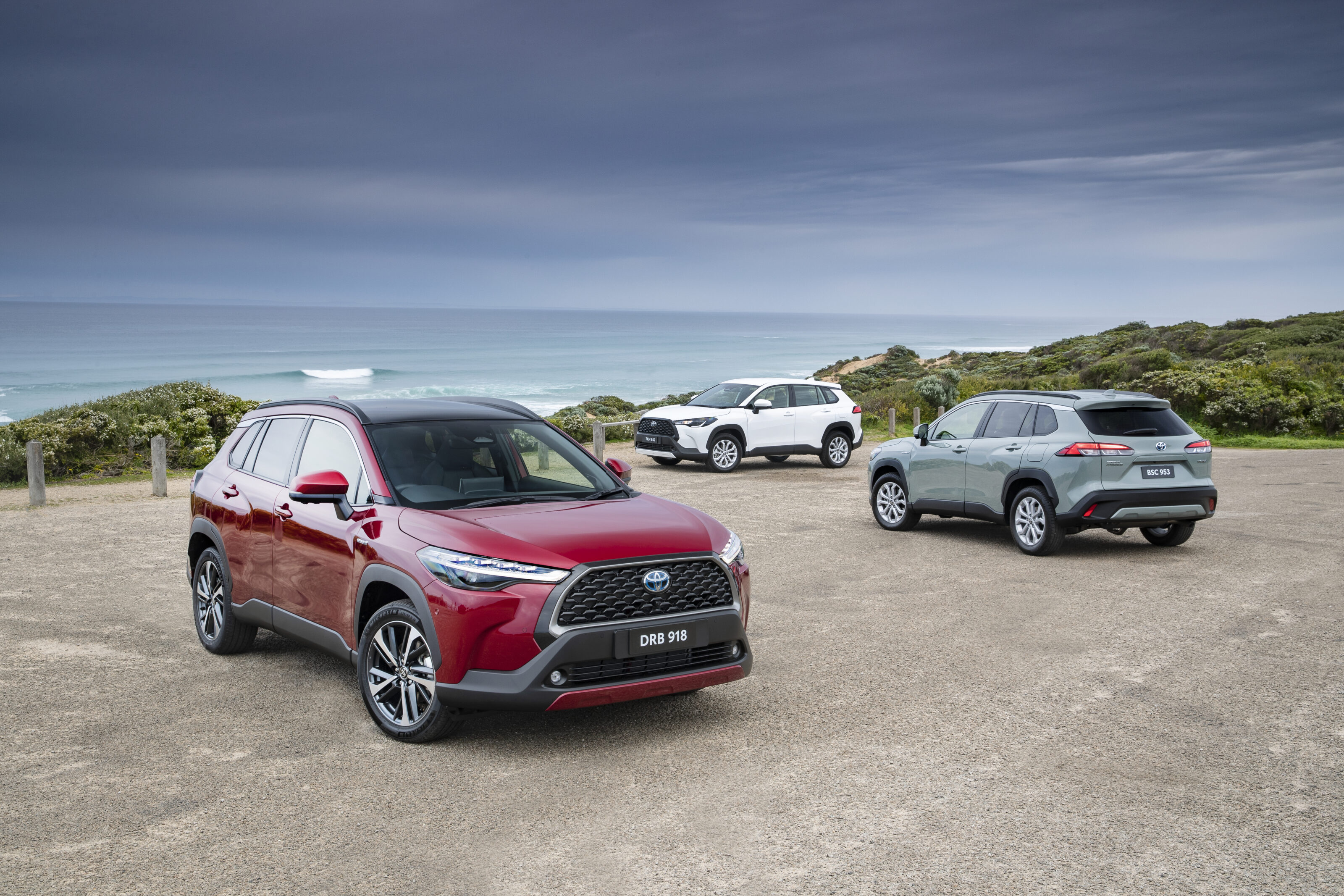
What matters is that the Corolla Cross addresses the practicality concerns of the hatch and C-HR, combining a boot big enough for more than a Shih Tzu and back seats that aren’t just for amputees with the Corolla nameplate’s signature low fuel consumption and fun driving dynamics.
As for delivery times, Toyota did not put a figure on the wait expected for a Corolla Cross order. There is apparently healthy stock from launch though, so it could be a great way to get into a family-friendly hybrid sooner than a RAV4.
2023 Toyota Corolla Cross specs: The basics
| Feature | Corolla Cross petrol | Corolla Cross hybrid FWD |
|---|---|---|
| Engine | 2.0-litre petrol | 2.0-litre petrol + electric motor |
| Motors (F) | NA | 83kW/206Nm |
| Power | 126kW | 146kW |
| Torque | 202Nm | Not quoted |
| 0-100km/h | 9-9.2 seconds | 7.5 seconds |
| Gearbox | CVT auto, 10 stepped ratios | eCVT auto |
| Body | 5 doors, 5 seats | 5 doors, 5 seats |
| Fuel/tank | 91 RON / 47 litres | 91 RON / 36 litres |
| Economy | 8.7L/100km (tested) | 4.8L/100km (tested) |
| Boot space | 436 litres | 425 litres (other models 380-436L) |
| C-HR boot: 318L (petrol and hybrid), RAV4 boot: 580L (542L in hybrid) | ||
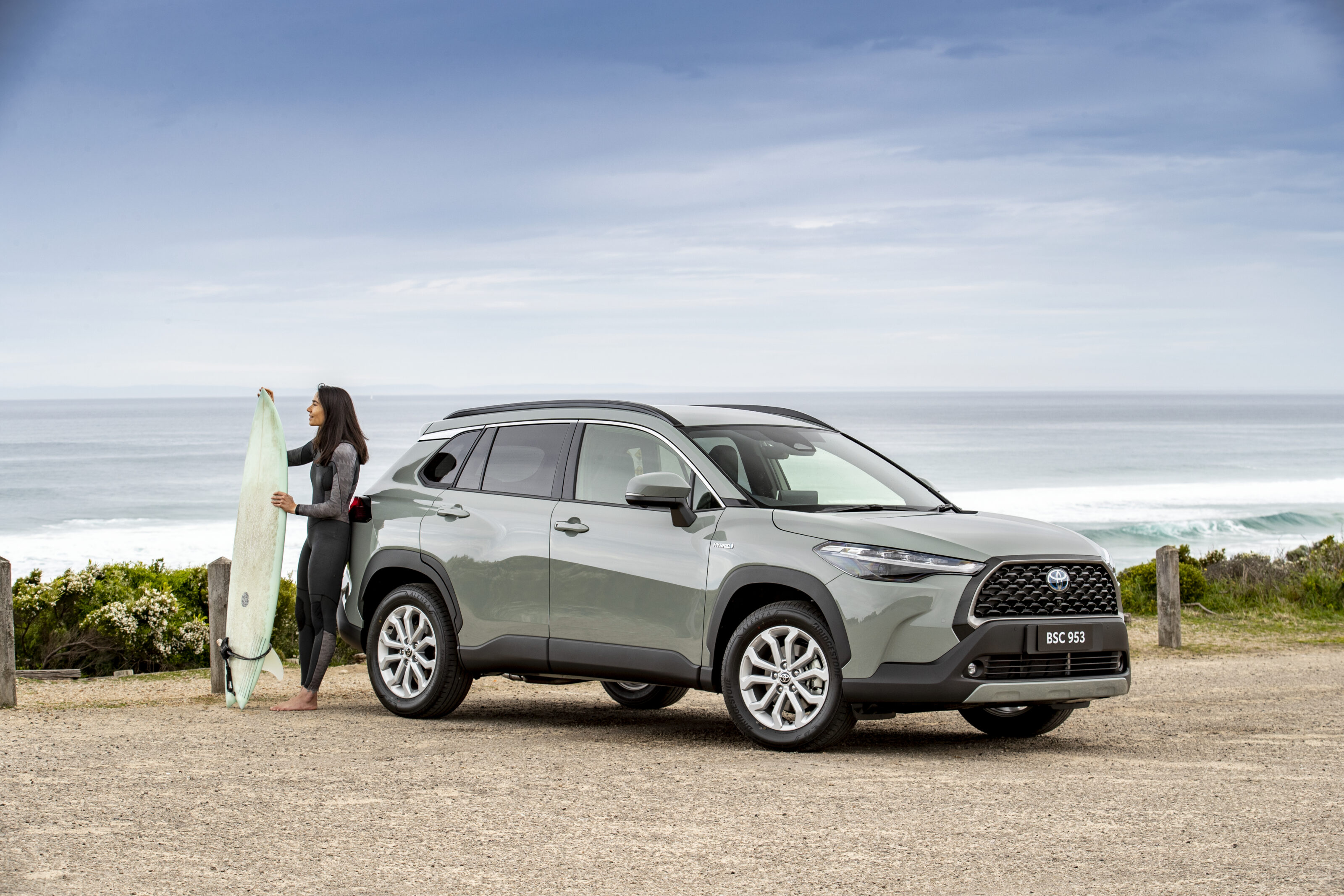
JUMP AHEAD
- How much is it, and what do you get?
- How do rivals compare on value?
- Interior comfort, space and storage
- What is it like to drive?
- How is it on fuel?
- How safe is it?
- Warranty and running costs
- VERDICT
How much is it and what do you get?
The Corolla Cross range opens with the GX, priced from $33,000 for the petrol and $35,500 for the hybrid, climbing up to $49,050 for the Atmos AWD hybrid (all before on-road costs).
Toyota expects between 45-50 per cent of sales to come from the base GX trim, followed by Atmos (30 per cent) and GXL (25 per cent).
On top of that, 70 per cent of buyers are likely to go for the hybrid powertrain, showing that even though battery-electric vehicles are broadly accepted as the future, a combined power solution still resonates with plenty of Australian buyers.
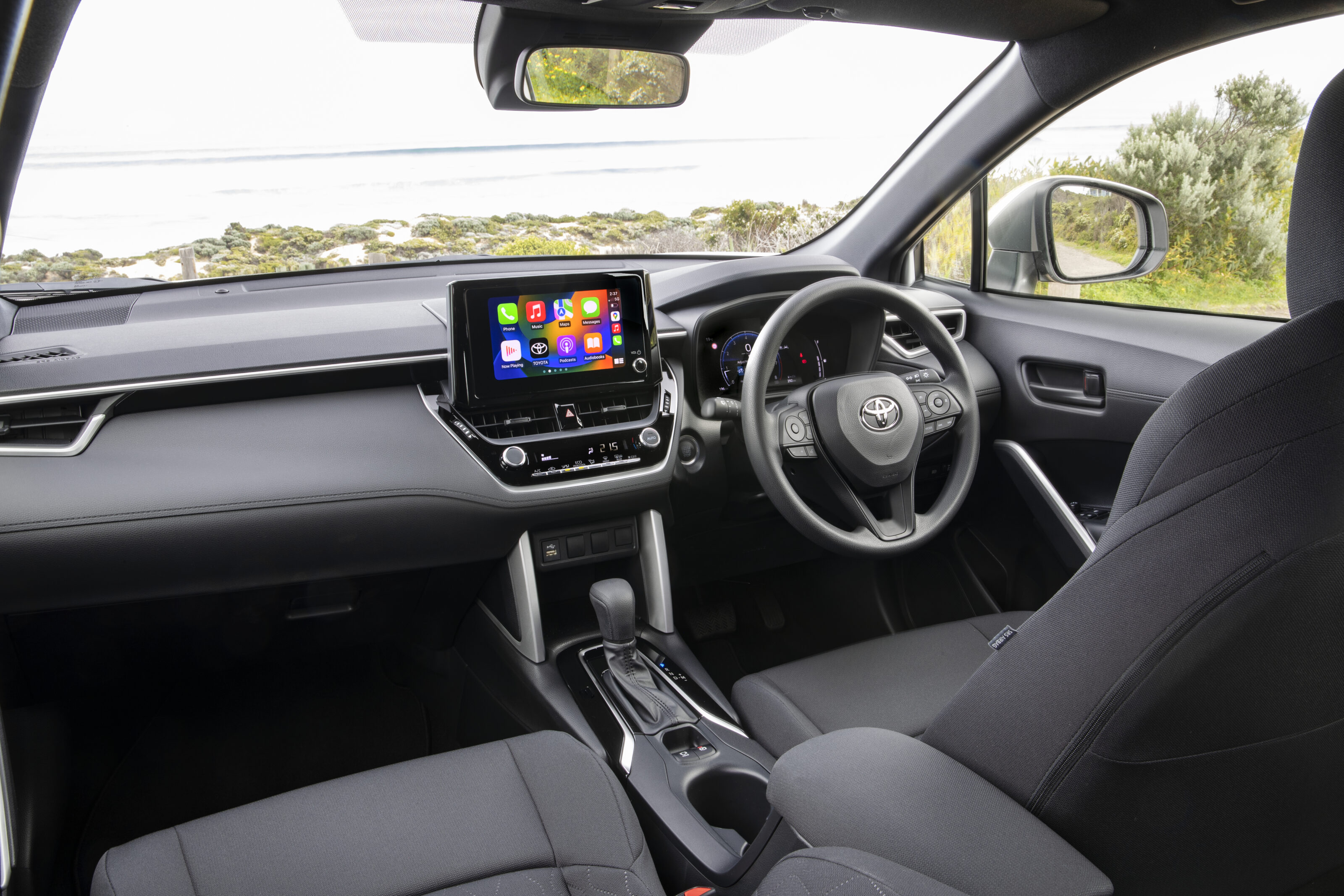
The volume-selling GX is equipped with a solid technology package. An 8.0-inch touchscreen sits in the centre of the dash with wireless Apple CarPlay (but wired Android Auto) next to a 7.0-inch digital instrument cluster.
Graphics in the infotainment screen are a big jump from Toyota’s previous attempt, though the driving display’s graphics are immature against the Volkswagen T-Roc.
In-built satellite navigation is standard across the range, and the Corolla Cross debuts connected services with ‘Hey Toyota’ voice control allowing drivers to ask where the nearest toilet is, wind up the windows or find out what restaurants are nearby.
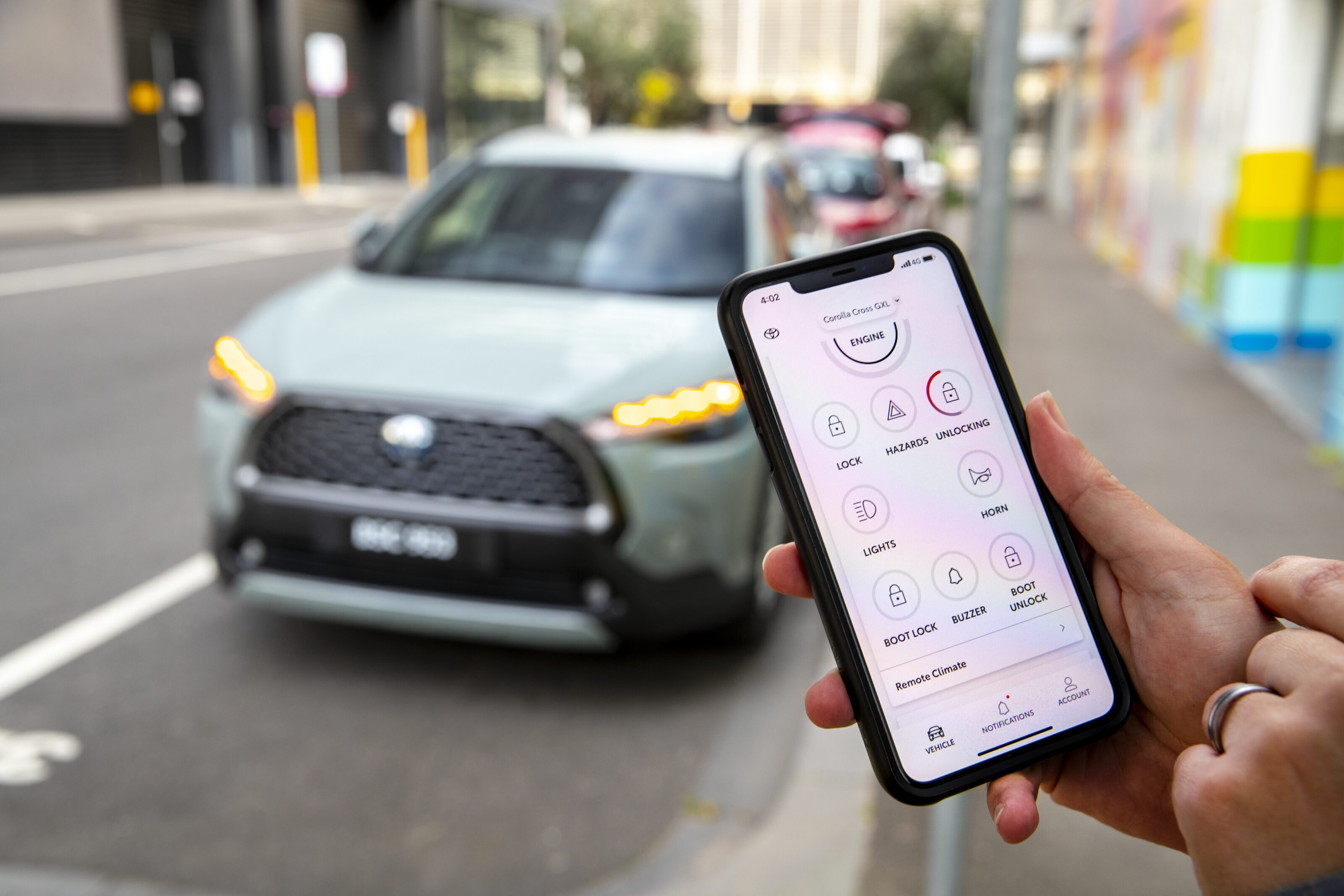
Toyota’s Connected Services app gives the ability to lock and unlock the car, as well as start the engine and check its status.
It doesn’t function as a digital key, though, so you’ll still need the fob on you to drive off in the Corolla Cross.
The features are included for the first 12 months of ownership. Owners who want to continue to use these services will have to pay $9.95 for Toyota Connect+ and $12.50 for Connected Multimedia monthly.
The mid-spec GXL costs an extra $3750 for a lifted technology package with dual-zone climate control and a larger 10.5-inch touchscreen. There are also air vents and a pair of USB-C chargers in the back seats.
Outside, the GXL wears the same 17-inch alloy wheels and doesn’t feature any badging to differentiate it from the GX. Only the smoked LED daytime running lights give it away.
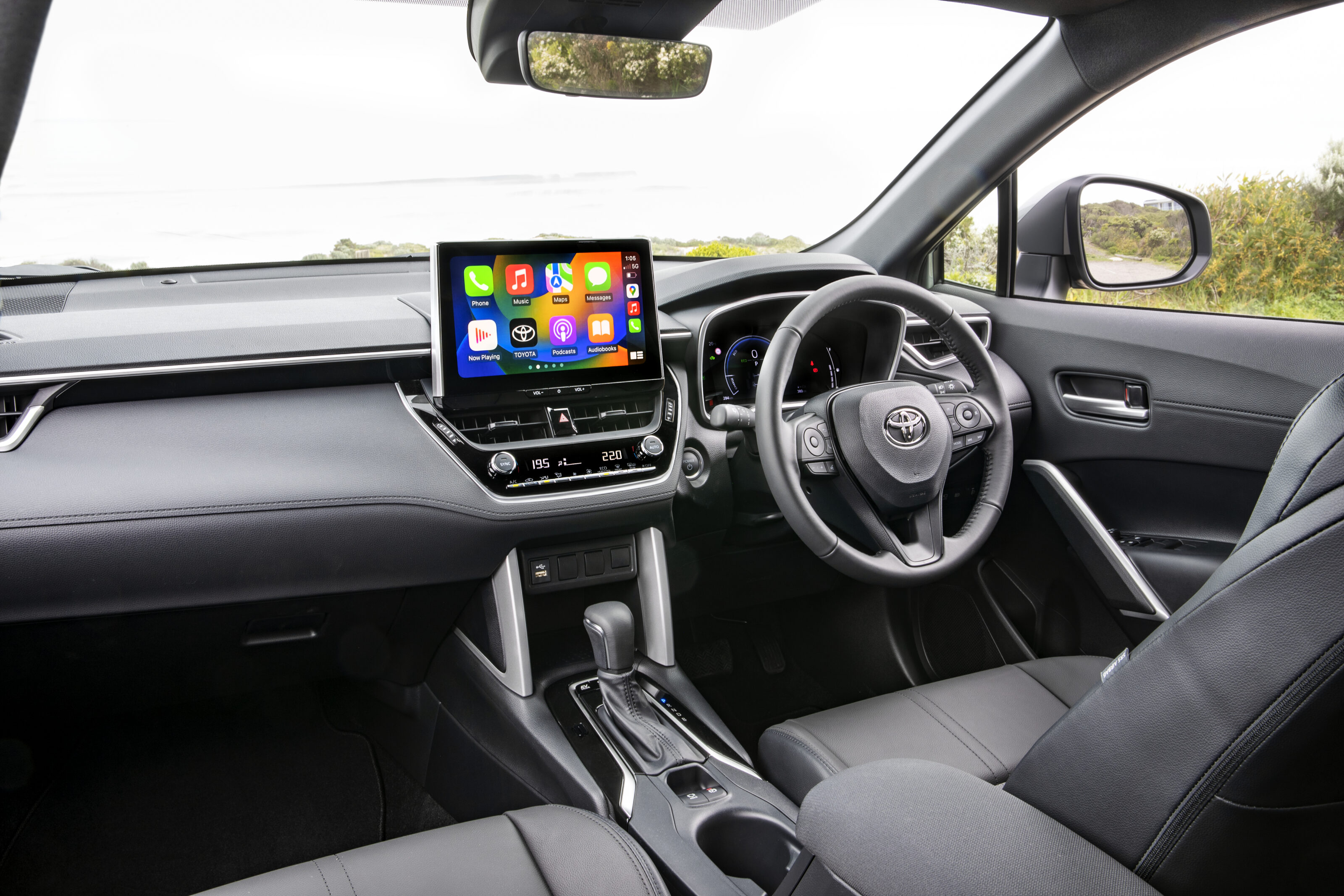
| Corolla Cross GXL adds: |
|---|
| 10.5-inch touchscreen |
| Dual-zone climate control |
| Soft-touch front door trim |
| LED DRLs and smoked headlights |
| Leather-accented upholstery |
| Leather-appointed steering wheel and gear shifter |
| 2x USB-C charge ports (rear seat) |
| 360-degree camera |
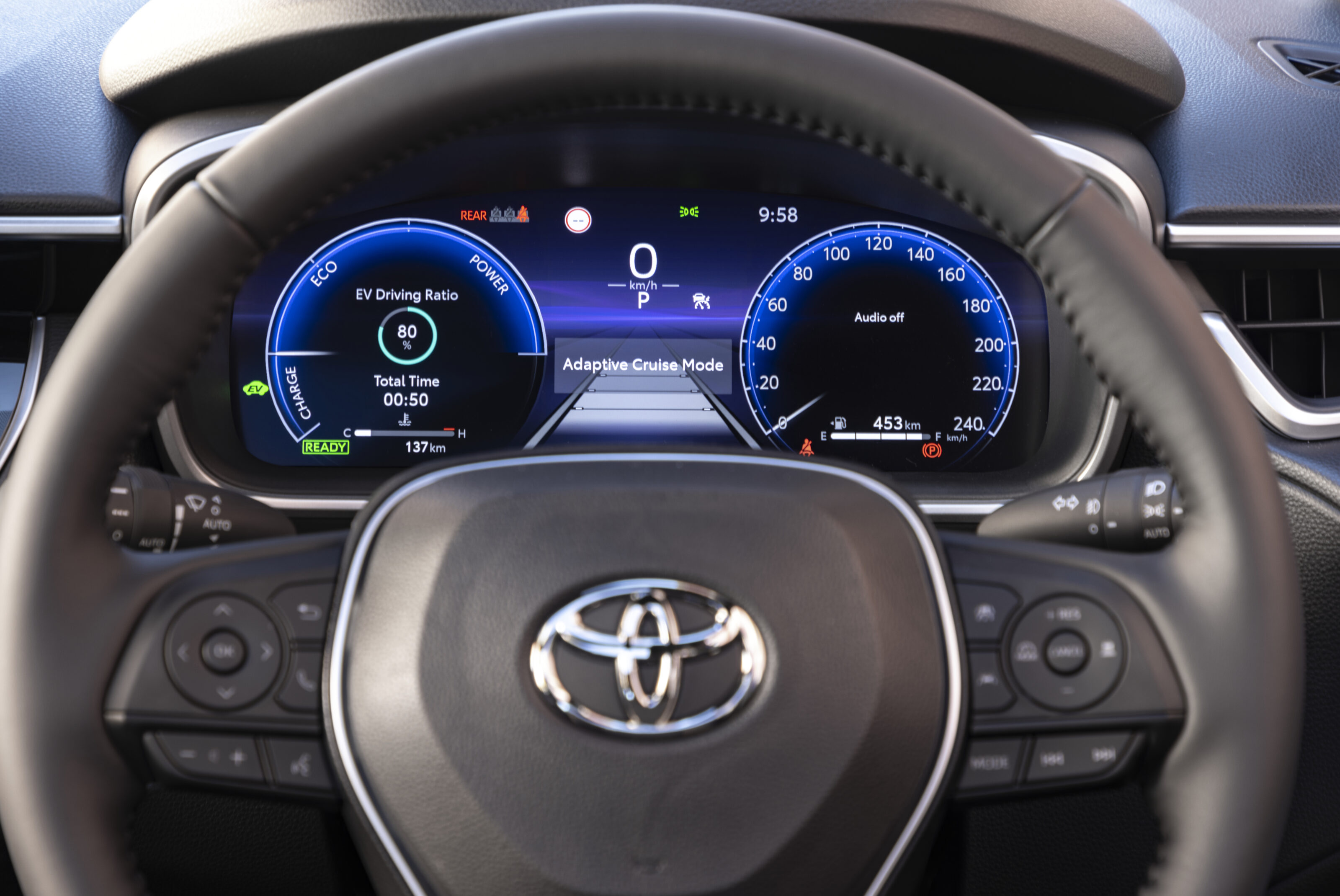
Atmos grade amps its exterior appearance with 18-inch alloy wheels featuring contrasting machined and painted faces and Atmos badging. Inside, there’s full leather upholstery and two-stage seat heating for the front seats to finally use the switch blanks.
Toyota also includes a Qi wireless phone charging pad, power driver’s seat adjustment, 12.3-inch digital driver’s display and a sunroof.
Only one USB-A charge port is accessible from the front seat of the 2023 Corolla Cross, with a 12V socket in the covered storage compartment beneath the armrest.
| Corolla Cross Atmos adds: |
|---|
| Panoramic sunroof |
| 12.3-inch digital driveru2019s display |
| Leather upholstery |
| 8-way power driveru2019s seat adjustment |
| 2-stage front seat heating |
| Wireless charging pad |
| Auto parking |
| Higher quality 360-degree camera |
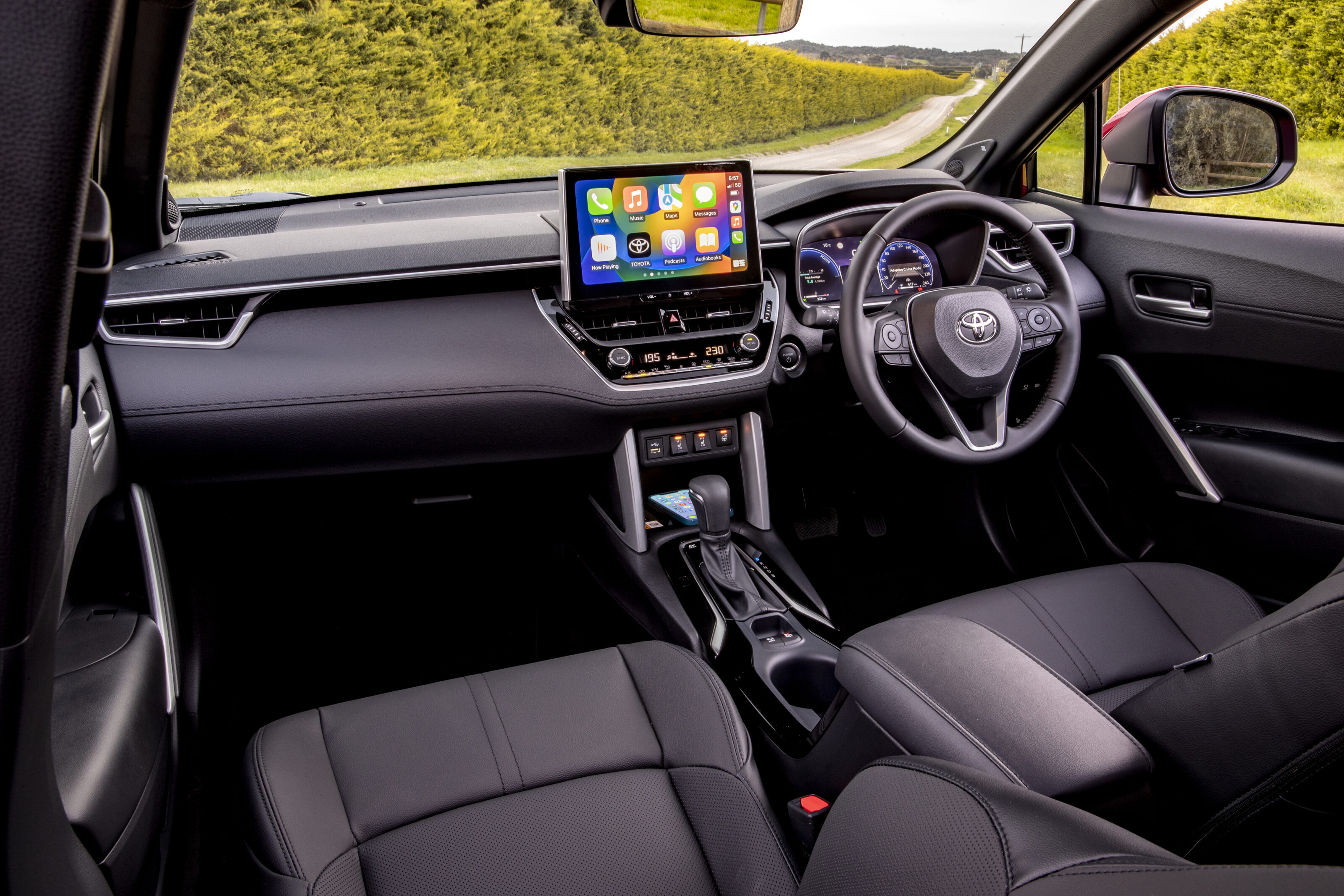
One thing to note about the Corolla Cross’s technology pack is, although much better presented than the about-to-be-superseded Corolla hatch, the boot-up time is really slow. I timed it at between 20-22 seconds repeatedly until it was possible to adjust music or enter a navigation destination.
There are no option boxes to tick in the Corolla Cross range, with the only choice being one of eight paint colours including Jungle Khaki and Atomic Rush. A premium hue such as Lunar Blue costs $575.
How do rivals compare on value?
Compared to a similarly-specified Corolla Ascent Sport hatch, with which the Cross shares its underpinnings and basic engine, the new SUV commands an extra $7605. That’s rather a lot of cash, though the impending Corolla tech update is likely to bring a price increase for the small car.
Such an upcharge is not out of the ordinary for the small SUV class, either. A base Hyundai Kona starts at $26,900, while the Mazda CX-30 G20 Pure auto costs $31,090.
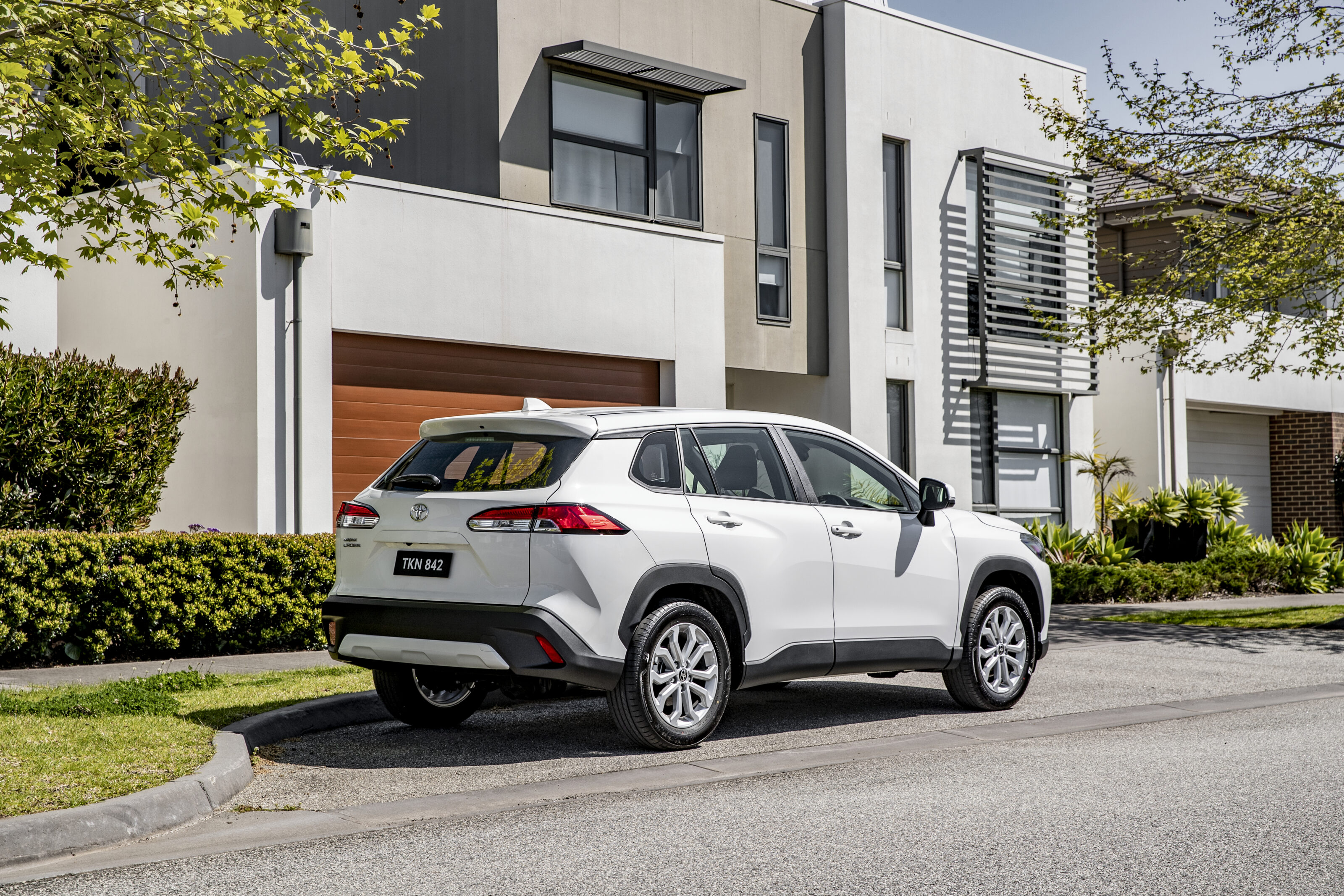
Both those vehicles share similar levels of equipment, with cloth upholstery, similar size infotainment screens and safety assistance systems such as auto emergency braking, lane-keep assist and forward collision warning.
Probably the biggest problem for the Corolla Cross, though, is that the larger RAV4 costs only $1400 more in base GX trim.
Meanwhile, a mid-spec RAV4 GXL hybrid costs $1200 more than the equivalent Corolla Cross with a wireless phone charger and 160kW 2.5-litre hybrid powertrain.
The midsize RAV4’s extra size and current popularity mean it’ll be harder to fit in a parking spot and harder to get hold of from a dealer. But it does make the Corolla Cross look rather expensive.
Mini match-up
Interior comfort, space and storage
The 2023 Corolla Cross is equipped with supportive, comfortable seats across the range and every grade is equipped with power adjustable lumbar support for the driver.
Base GX and GXL grades have fairly rudimentary manual adjustment, while the Atmos gets heated seats with leather upholstery and eight-way power adjustment for the driver’s seat.
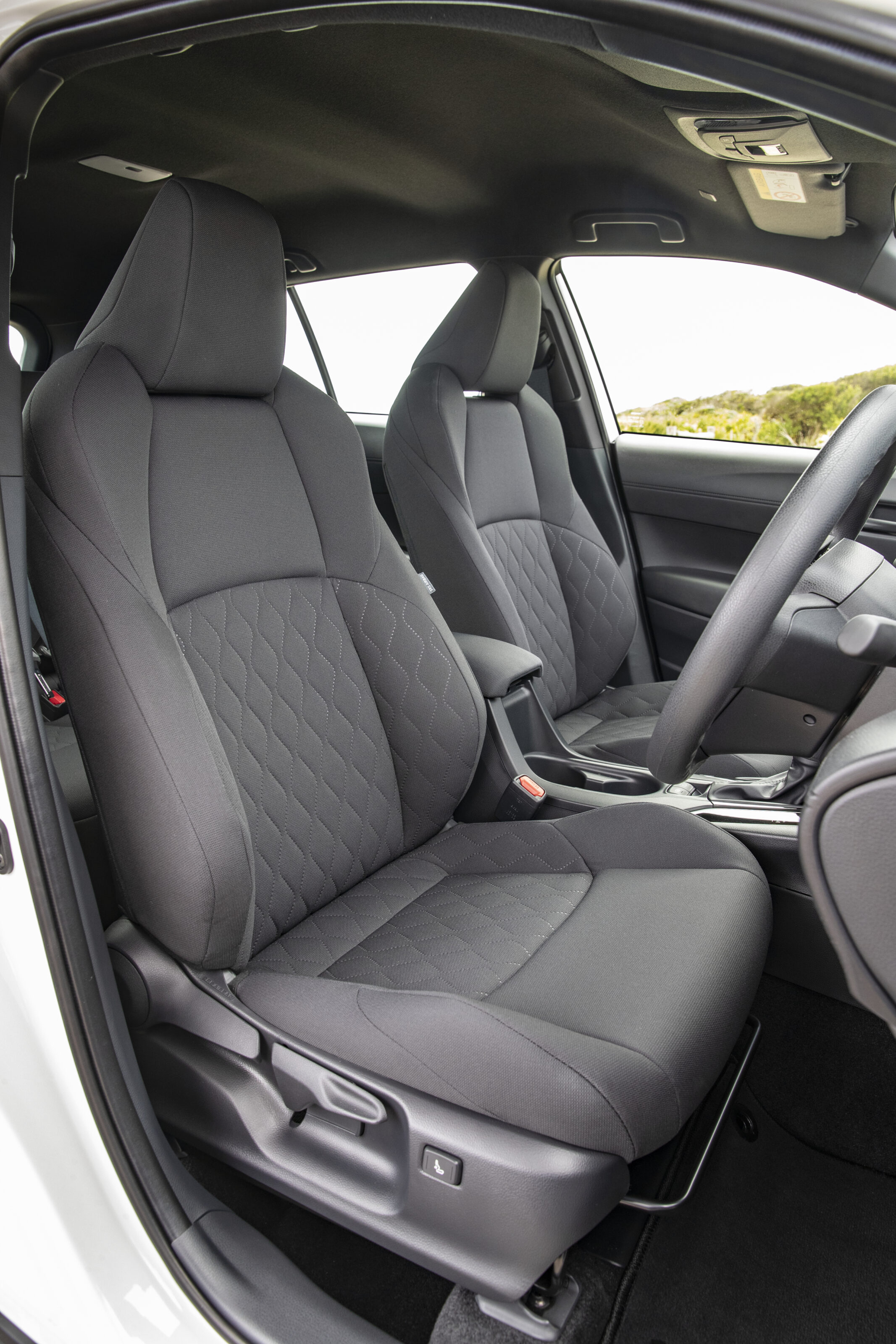
Those front seats are set high – bringing the eye-point up 130mm, says Toyota – which is really annoying for tall front passengers as that seat has no height adjustment. Under the Atmos’ standard sunroof there isn’t heaps of headroom, either.
The Corolla Cross is not a standout when it comes to material quality either, with low-rent plastics compared to Mazda’s luxurious CX-30. It’s most noticeable on the Corolla’s hard dash and front doors in base GX. The GXL gets squishy front doors, though all Crosses have hard-mould back doors.
Practicality is fairly strong with door bins big enough for a one-litre bottle in the front, a covered cubby under the armrest, two cup holders and a rubberised tray ahead of the shifter that is ideal for smartphones.
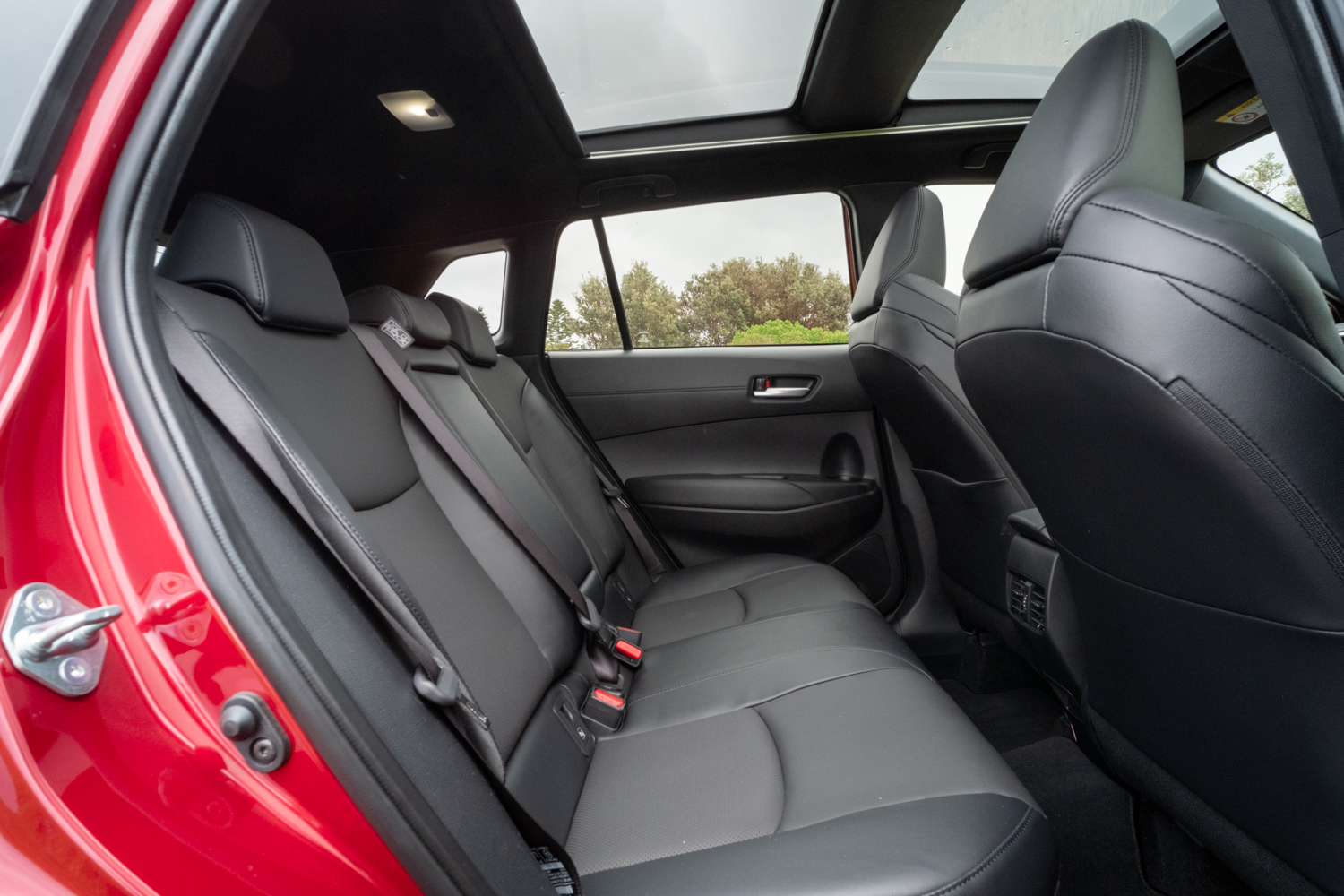
In the back seat, there is no fold-down armrest and the cup holders in the doors will fit a kiddie-sized bottle or large coffee. The range-wide black headliner also makes the rear quarters quite a dark and dingy place to sit.
Aside from those misses, the back seat of the Cross is much more usable than the hatch. With 80mm more headroom, I was comfortable at 188cm.
There was plenty of toe room, though knee room was more compromised than I expected. Two adjustable air vents and a pair of fast-charge USB-C ports feature from GXL upwards.
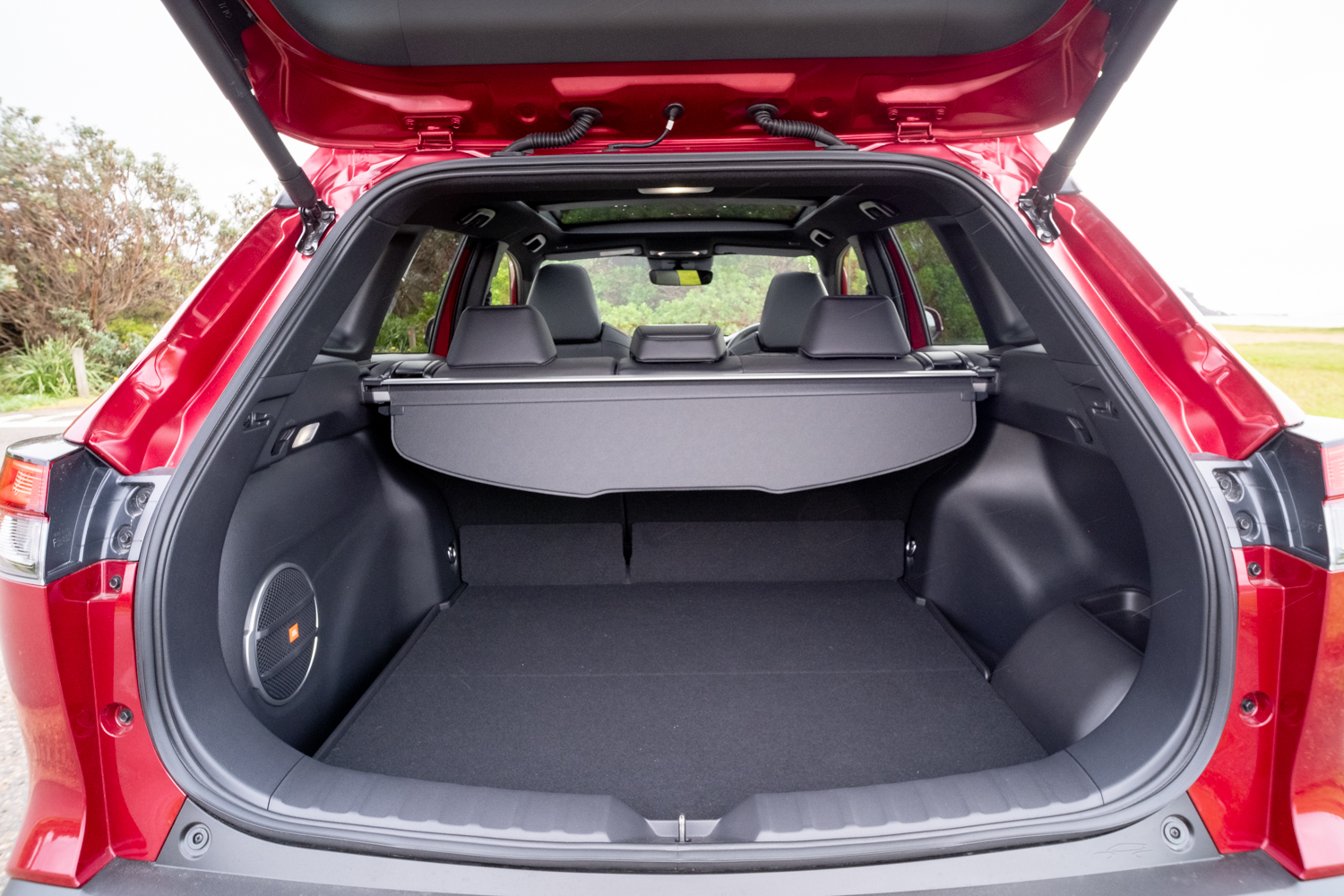
2023 Toyota Corolla Cross specs: Boot space
The boot is generous and spans in official VDA rating from 380L in flagship Atmos AWD to 436L in the base GX petrol. The load lip is fairly low and there’s a little more storage under the floor.
When folding the second row, the load space doesn’t go truly flat – unlike a Honda HR-V for example – so carrying bicycles or surfboards is just that little bit less easy.
Front-drive variants of the 2023 Corolla Cross are equipped with a space-saver spare tyre, while AWD hybrids make do with a puncture repair kit.
What is it like to drive?
Our experience started in the Atmos FWD featuring the new fifth-gen hybrid powertrain ($46,050 before on-road costs). As we’ve come to expect from Toyota, it was a silent start with EV Mode allowing slinky operation through the streets of Double Bay in peak hour traffic.
Visibility from the front seat is excellent, with a commanding view over the bonnet. Toyota has also made the A-pillars thin, which makes it easy to judge gaps at intersections.
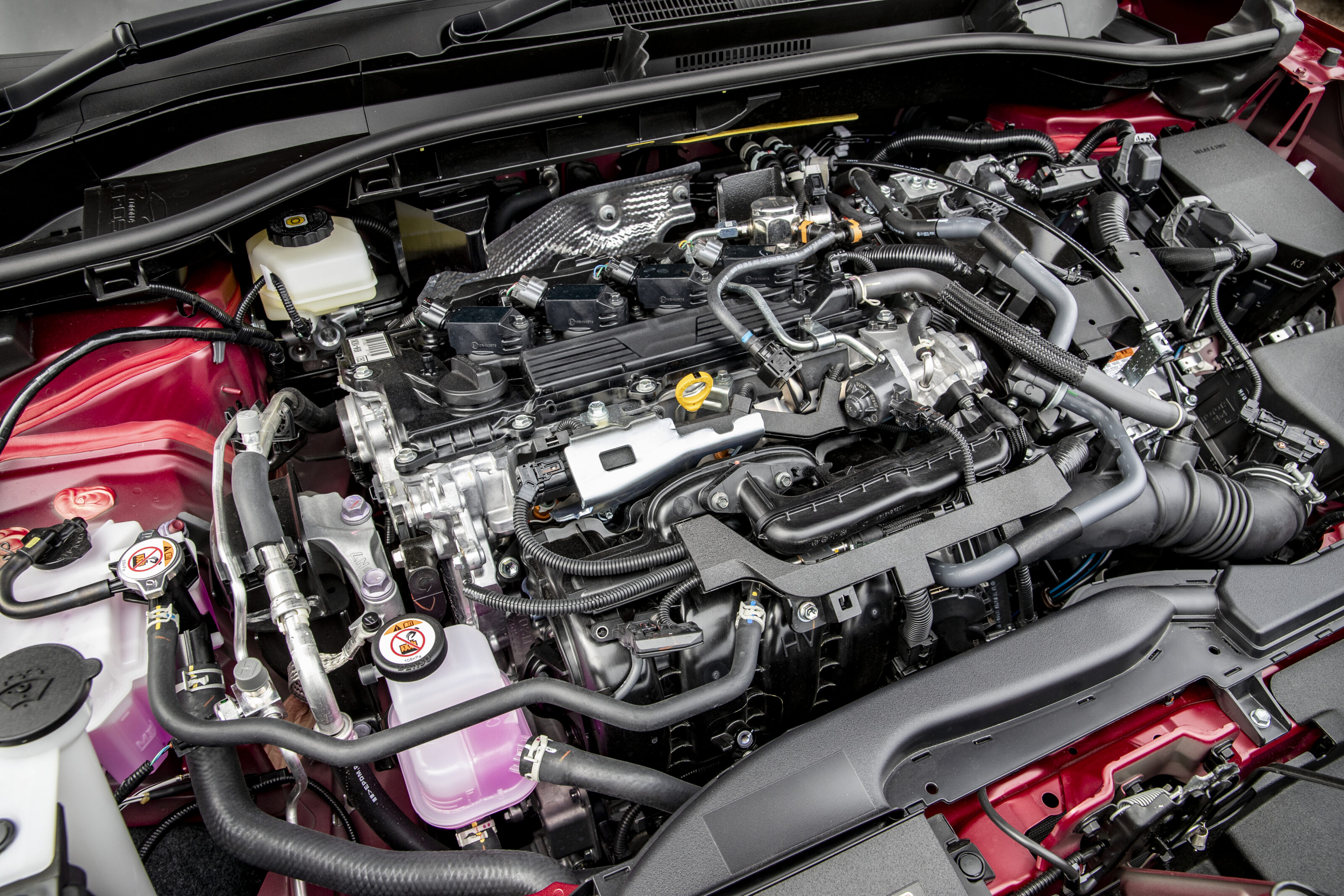
Getting up to speed on the freeway requires a little assistance from the 2.0-litre which, when combined with the continuously variable transmission (CVT), raises a thin and gruff tone under full throttle. Compared to a turbo-petrol engine like you’d find in a VW T-Roc, it’s a little unrefined but the Corolla hybrid is still quieter than naturally-aspirated rivals.
Toyota says that with the fifth-gen hybrid tech, it’s all about being sportier and involving for the driver. There are three modes: Eco, Normal and Power, with the latter sharpening throttle response and subtly increasing steering weight for a more athletic feel.
The Corolla Cross hybrid is pretty quick, boasting 146kW from the combination of an Atkinson cycle 2.0-litre petrol four-cylinder and front electric motor (83kW/206Nm).
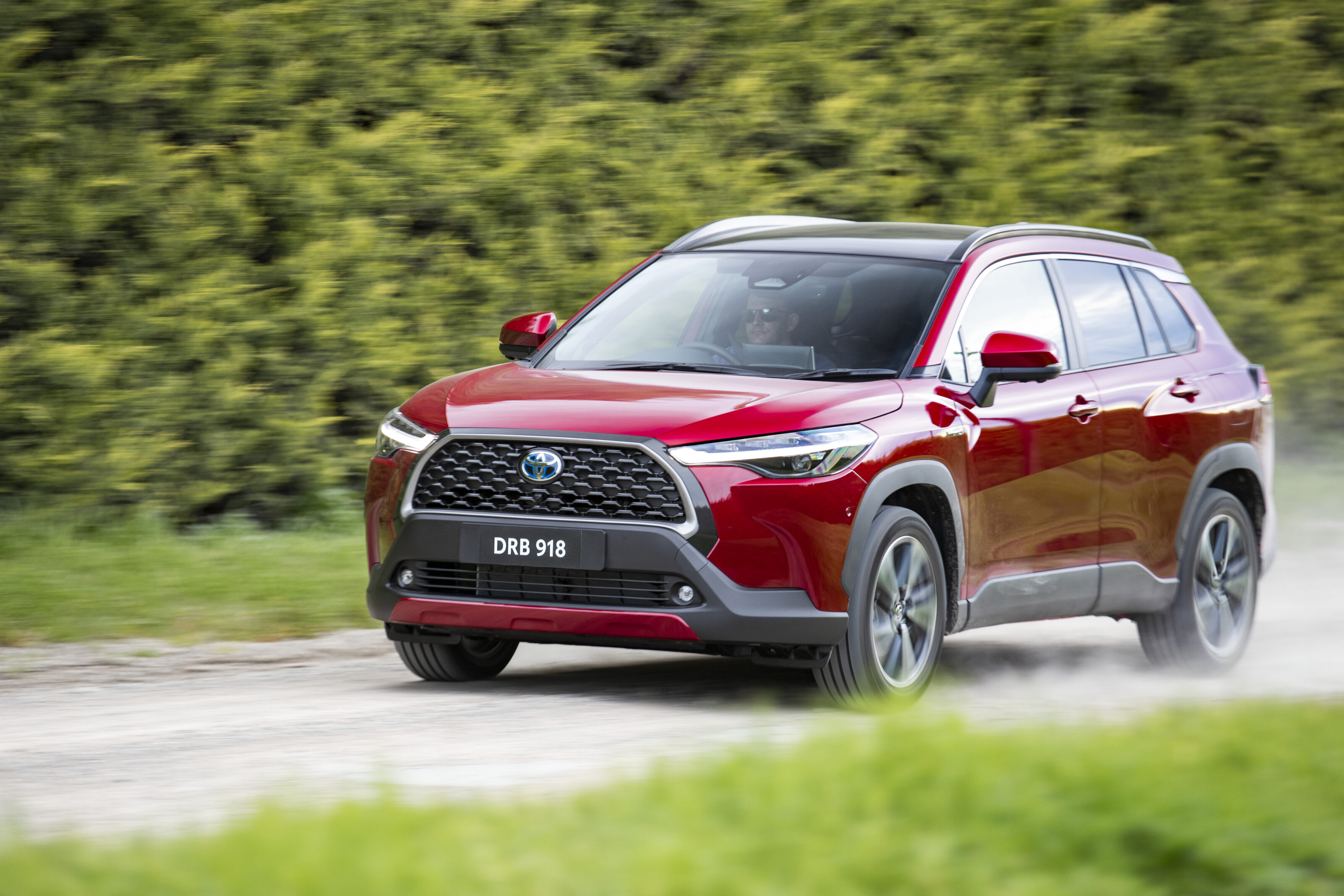
Toyota claims the Corolla Cross hybrid can get from 0-100km/h in 7.5 seconds, which is pretty nippy compared to a Mazda CX-30 G25 (9.1 seconds).
Road noise is well suppressed, though the 225/50 R18 Michelin Primacy tyres of the Atmos are a little louder in the cabin than the lower spec GXL’s 215/60 R17 Bridgestone Alenzas.
Threading the Corolla Cross through some twisty roads revealed that it drives exactly like a lifted Corolla hatch. There’s a bit more body roll and less precision than the sporty and involving hatch, but still the same light and accurate steering with plenty of talent and composure from the chassis.
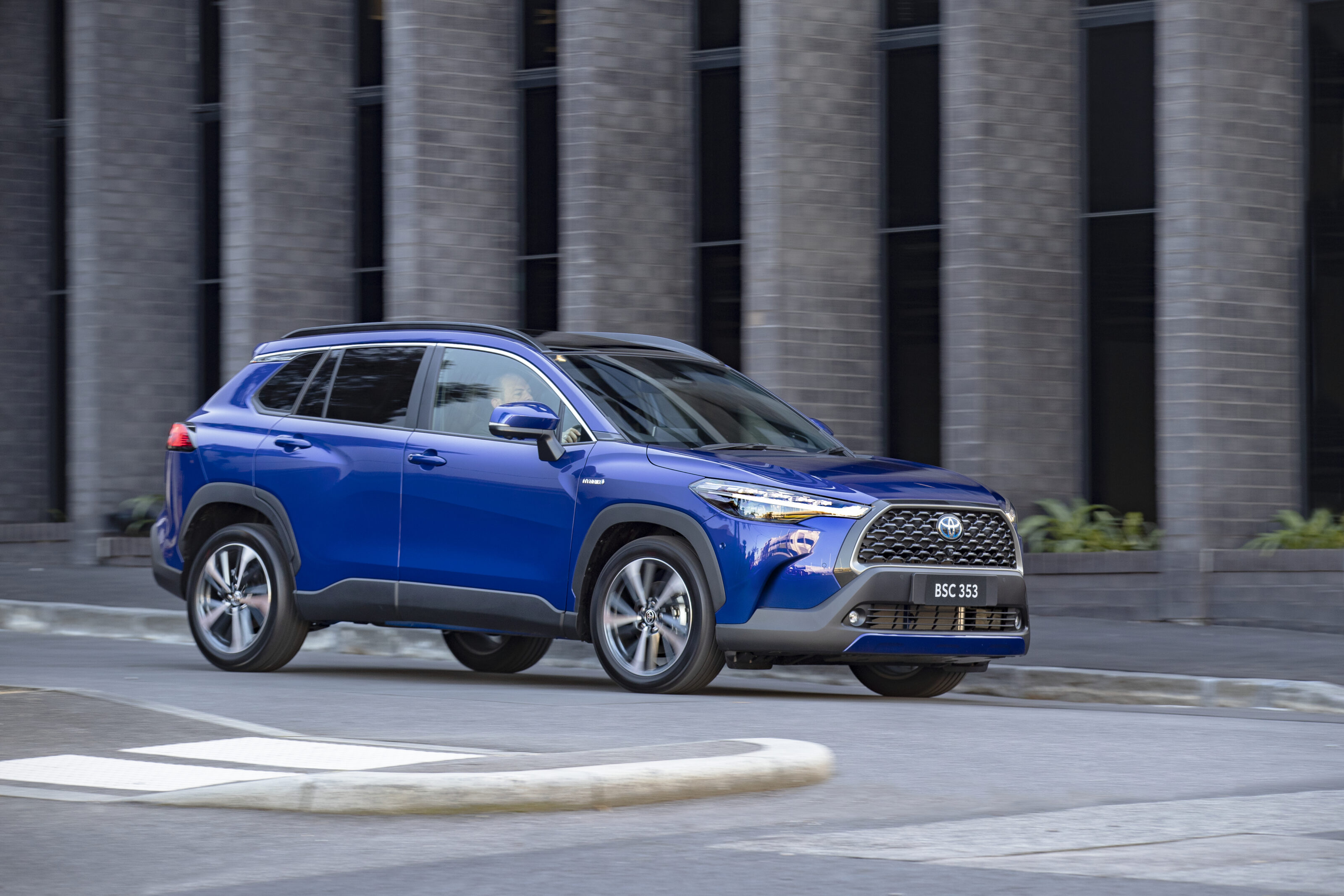
Unlike the Corolla hatch, though, the Cross makes do with a torsion beam rear end in front-drive models. Toyota says it’s a new design with softer bushings for greater compliance, but there’s still that signature beam rear-end skip when the Cross hits a mid-corner bump.
Next up it was time for a quick sample of what Toyota expects to be the volume variant, the base GX. Sampling it first with the ‘Dynamic Force’ 2.0-litre petrol, which has been revised with a new timing chain case, lower viscosity oil and thicker resin valve covers for an extra kilowatt (126kW) and two more Newton metres (202Nm) than in the hatch or sedan.
The petrol is hooked up to the front wheels via a CVT with 10 simulated stepped ratios. The result is decent motivation for a car this size but it’s so worth spending the extra $2500 on the hybrid if you can. In the real world, the electric operation and extra punch makes a huge difference to driveability. A back-to-back drive with a hybrid GX confirmed it’s the better choice.
But is it worth spending another $3000 on top of the front-drive hybrid to get an extra 30kW electric motor at the rear? Driving away from the launch in a GXL AWD hybrid would suggest not. The independent rear suspension is nice to have, but with how soft the Corolla Cross is, most won’t notice a night and day difference between the rear suspension set-ups.
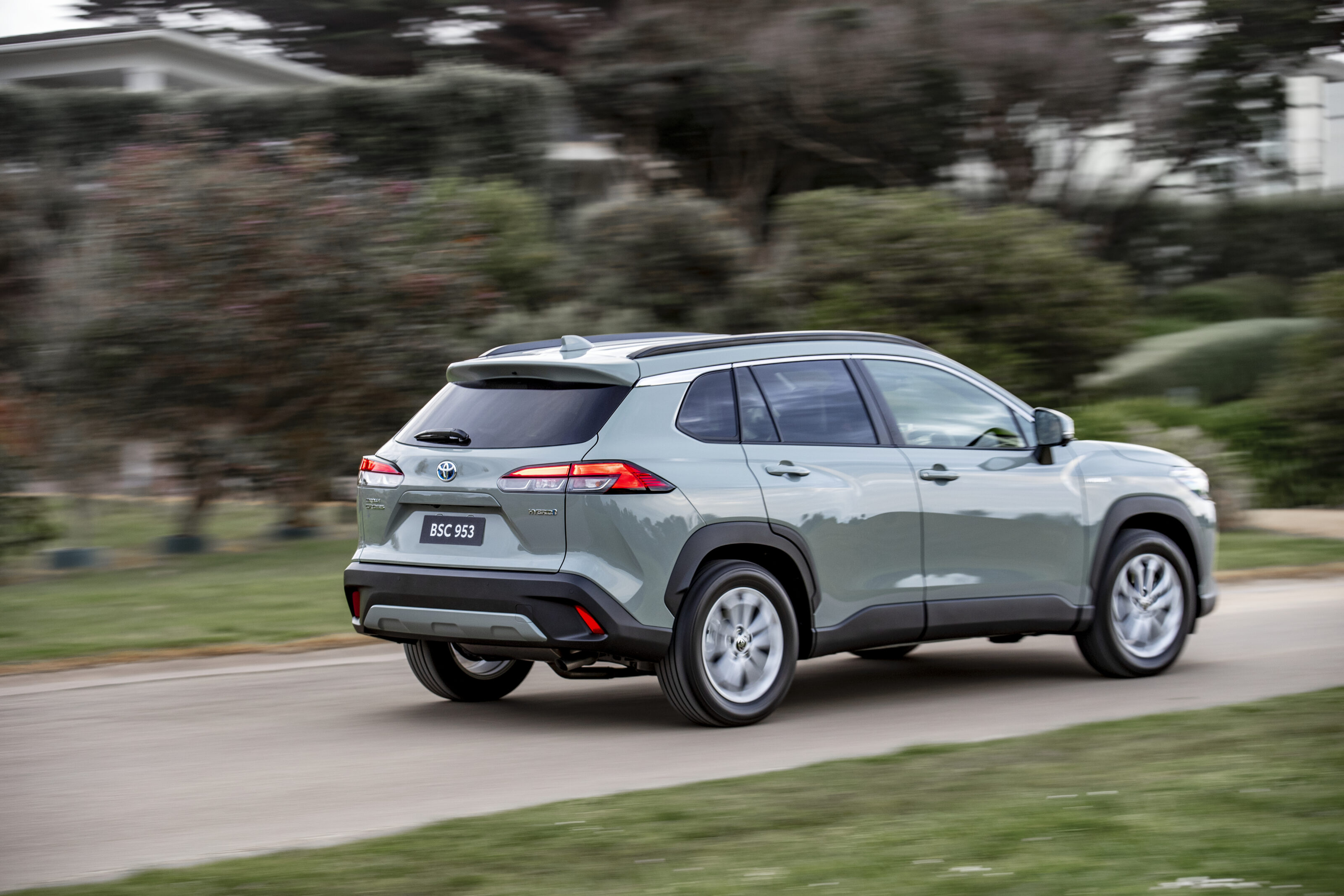
How is it on fuel?
This is where the Corolla Cross has most of its big-selling rivals licked in hybrid guise. An ADR combined rating of 4.3L/100km (4.4L/100km for the AWD) is impressive but more so is its real-world frugality.
Driving back from Palm Beach to Sydney’s inner west in regular afternoon traffic, the Corolla Cross GXL AWD was showing 4.0L/100km on its trip computer – that’s excellent. Some more running on freeways and in heavy daily traffic saw this climb to 4.8L/100km. The front-drive hybrid’s 36-litre fuel tank gives it a driving range of around 840km.
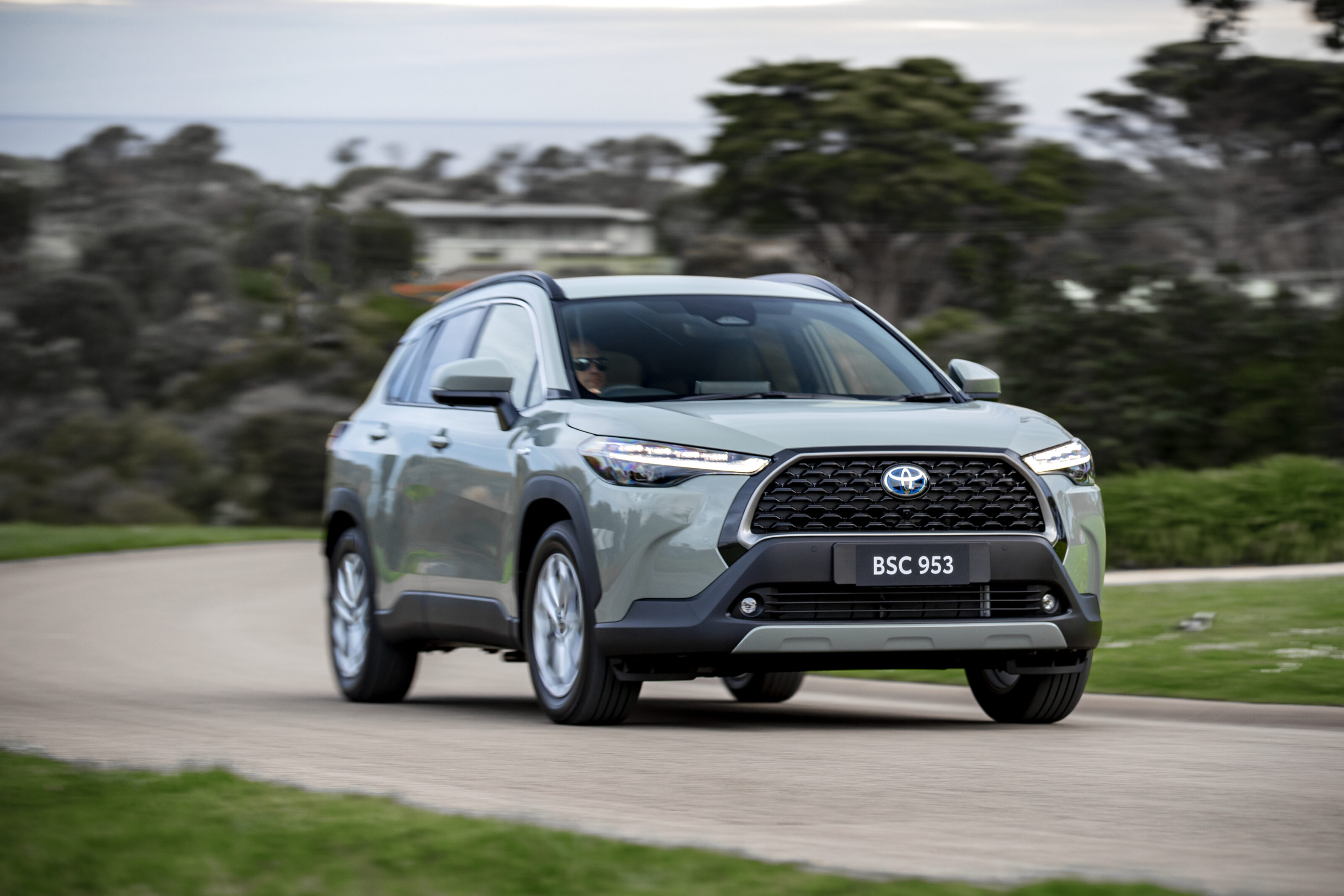
Ignoring the hybrid for a moment, the 2.0-litre petrol is also light on fuel use. The combined ADR figure is 6.0L/100km and we saw 8.7L/100km in a mix of suburban and open-road running on the car’s launch program.
Both petrol and hybrid Corolla Cross variants will accept 91 RON or an E10 blend at the bowser.
How safe is it?
The 2023 Toyota Corolla Cross is equipped with all the safety features needed for a five-star ANCAP score in the new 2023 protocol.

This means eight airbags with a centre airbag, AEB with car, pedestrian, cyclist and motorcycle detection, front cross-traffic alert with braking, rear cross-traffic alert, blind-spot monitoring and adaptive cruise control across the range.
ANCAP is yet to evaluate the Corolla Cross and as it isn’t sold in Europe, there is no direct Euro NCAP score we can look at.
North American safety testing body, the Insurance Institute for Highway Safety (IIHS) awarded the Corolla Cross its highest ‘Top Safety Pick+’ accolade.
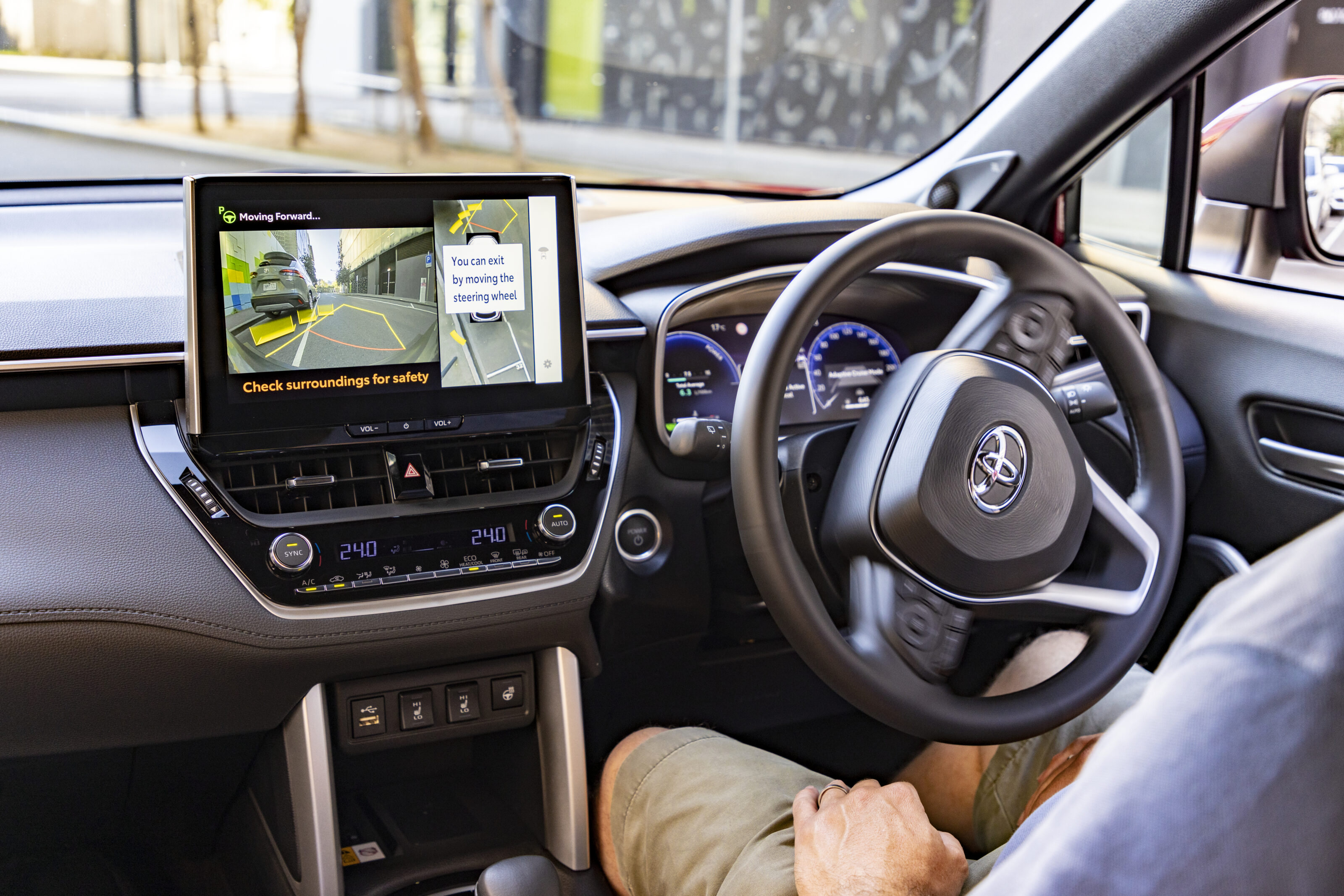
As for driver assistance systems, the Corolla Cross debuts Toyota’s latest Safety Sense system with improved adaptive cruise control and lane-trace assist programming. The lane-keep assist is now more useful than before without being as grabby as Hyundai/Kia’s systems.
Warranty and running costs
Toyota covers the 2023 Corolla Cross with a five-year, unlimited-kilometre warranty in Australia.
That’s not quite as long as Kia’s and Skoda’s seven-year, or Mitsubishi’s 10-year/200,000km guarantees, but it’s still plenty of peace of mind.
Servicing is due every 12 months or 15,000km. Toyota caps Corolla Cross service pricing for the first five years or 75,000km, over which time it will cost $230/visit or $1150 total.
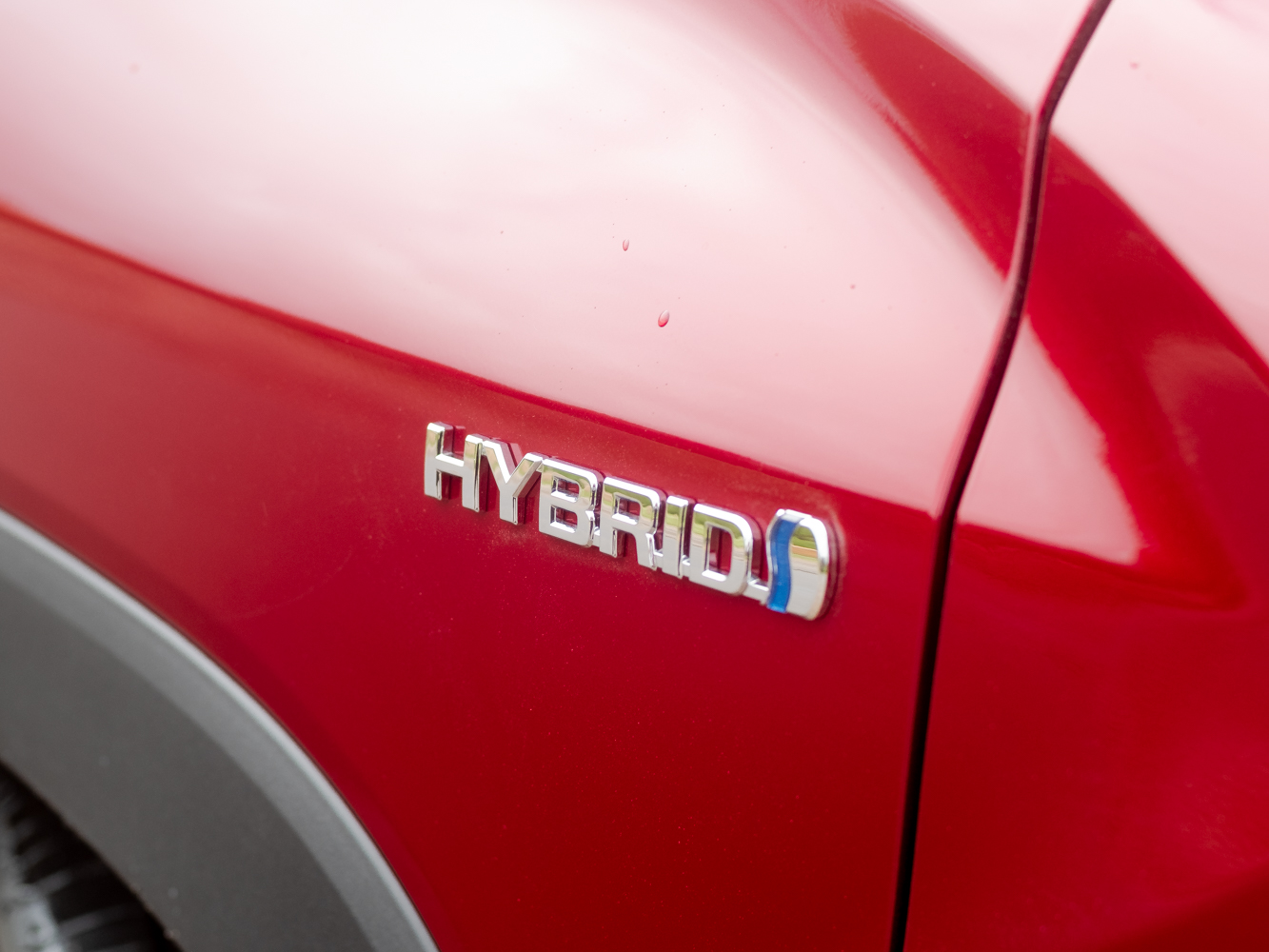
VERDICT
Sometimes you can judge a book by its cover, and the Corolla Cross is a perfect example.
Along with the small popular SUV factor, it takes all the excellent traits of the hatch and sedan, then adds boot and passenger space.
Although expensive, the pick of the range is the Atmos 2WD hybrid because the GXL simply misses a few nice-to-have items like wireless phone charging and power-adjustable seats.
Does that mean the Corolla Cross is the absolute best small SUV you can buy? It depends on what you value. The Mazda CX-30 has better dynamics, the T-Roc nicer steering and the Skoda Kamiq smarter packaging.
The Mitsubishi ASX and Hyundai Kona are both cheaper to buy while the Toyota RAV4 is only a fraction dearer but is way more spacious.
No other rival in the class offers a hybrid system that’s as frugal, refined and powerful as the Toyota Corolla Cross. Its dynamics and steering are also above average, and you can fit four adults in without trouble.
2023 Toyota Corolla Cross specifications
| Feature | Corolla Cross petrol | Corolla Cross hybrid FWD |
|---|---|---|
| Engine | 2.0L DOHC 16V | 2.0L DOHC 16V Atkinson cycle |
| Motors (F) | NA | 83kW/206Nm |
| Power | 126kW | 146kW |
| Torque | 202Nm | Not quoted |
| 0-100km/h | 9-9.2 seconds | 7.5 seconds |
| Gearbox | CVT, 10 stepped ratios | eCVT |
| Body | steel, 5 doors, 5 seats | steel, 5 doors, 5 seats |
| L/W/H/Wu2013B | 4460/1825/1620/2640mm | 4460/1825/1620/2640mm |
| Track (F/R) | 1570/1580mm | 1570/1580mm |
| Ground clearance | 160mm | 160mm |
| Boot space | 436L | 425L (other models 380-436L) |
| Weight | 1380kg | 1475kgu00a0 |
| Fuel/tank | 91 RON / 47 litres | 91 RON / 36 litres |
| Economy | 8.7L/100km (tested) | 4.8L/100km (tested) |
| Suspension | Front: struts, coil springs, anti-roll bar.u00a0 Rear: torsion beam | Front: struts, coil springs, anti-roll bar.u00a0 Rear: torsion beam |
| Steering | electric rack-and-pinion; 2.76L-L; 10.4Mu00a0 | electric rack-and-pinion; 2.76L-L; 10.4Mu00a0 |
| Front brakes | ventilated discs (305mm) | ventilated discs (305mm) |
| Rear brakes | Solid discs (281mm) | Solid discs (281mm) |
| Tyres | Bridgestone Alenza | Bridgestone Alenza |
| Tyre sizeu00a0 | 215/60R17, space-saver spare | 215/60R17, space-saver spare |
Score breakdown
Things we like
- Excellent hybrid powertrain
- Comfortable, well-sorted ride
- New infotainment system
- Cheap servicing
Not so much
- GXL’s switch blanks
- Dark and unexciting cabin
- Not as well-packaged as rivals
- Expensive to buy
We recommend
-
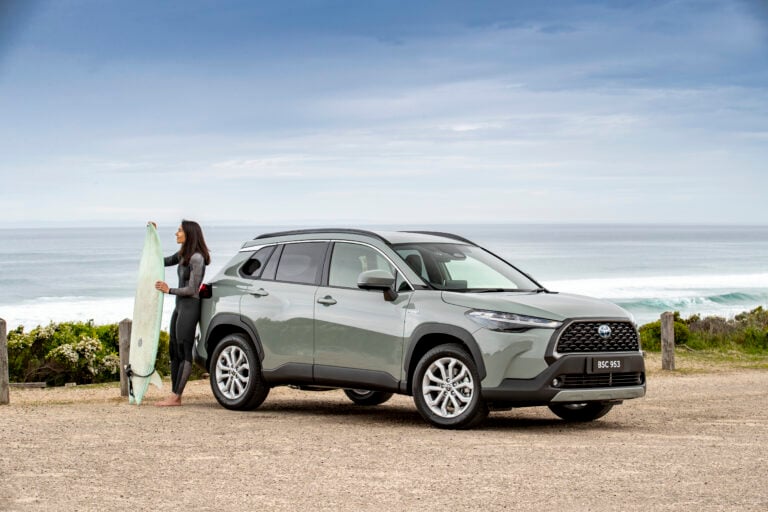 News
News2023 Toyota Corolla Cross: Everything you need to know
Toyota's hotly-anticipated Corolla Cross has landed in Australia priced from $33,000 before on-road costs
-
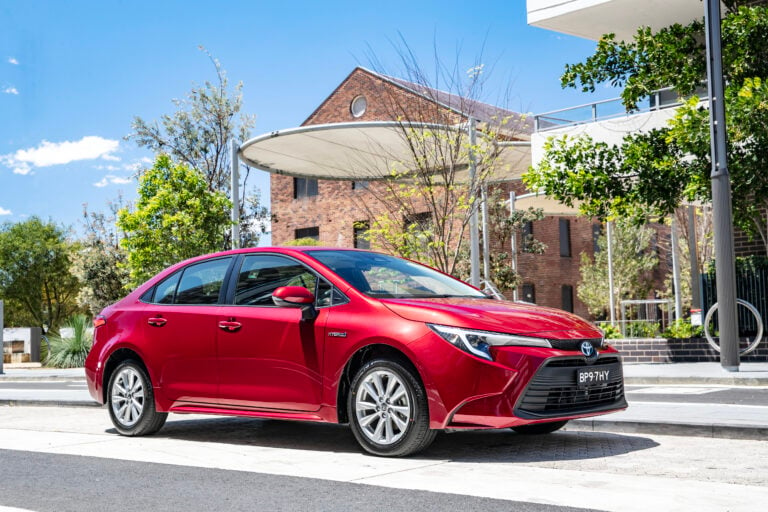 News
News2023 Toyota Corolla pricing and features
The refreshed 2023 Toyota Corolla range has been priced for Australia starting at $28,130 before on-road costs
-
 Reviews
Reviews2021 Toyota Corolla ZR review
Does Toyota's top-spec petrol Corolla justify the nameplate's global dominance?






